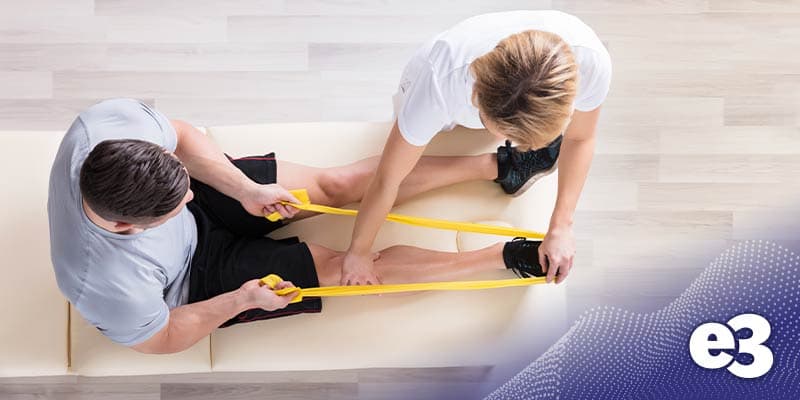Physical Therapy and the Hard-of-Hearing Patient

Communication is the foundation of any healthcare encounter. Whether the message is informational, instructional, encouraging, or empathetic, effective physical therapy (PT) relies on patients’ clear understanding of their treatment plans and trusting relationships with their physical therapists. Physical therapists can use verbal and nonverbal techniques to serve their hard-of-hearing clients better to boost positive physical and emotional patient outcomes. Communication barriers, explicitly hearing loss, are common in PT settings.
Treating an Aging Population
Hearing loss and the need for physical therapy are positively correlated with age. According to Johns Hopkins, one in three adults over the age of 65 suffer some measure of hearing loss. [1] This statistic is meaningful for physical therapists as over 36% of PT patients fall into this demographic. [2] As the Baby Boomer population continues to age into their senior years and life expectancy rises, physical therapy among the hard-of-hearing will become an increasingly widespread scenario.
The effects of age-related hearing loss are not limited to the ability to discern words and sounds. Studies show that a decreased hearing ability can also result in cognitive decline, including diminished comprehension, reticence, social isolation, and dementia. These neurological and mental difficulties, in turn, can have physical manifestations such as loss of balance, difficulty walking, and increased fall risk. These consequences of untreated hearing loss are attributed to the brain having to work harder to process signals and cues it can no longer receive through hearing. [3]
Awareness of these challenges can be the first step for clinicians to begin a conversation with clients about the PT process and, if appropriate, seeking treatment for hearing loss.
Fostering Positive Patient Interactions
Once physical therapists are aware of patients’ hearing difficulties and the extent to which they may affect their PT regimen, they can use several communication methods to increase the likelihood of constructive relationships with patients. Positive physical therapist-patient interactions have been shown to reduce both pain and disability, as well as result in higher patient satisfaction rates. [4] Here are a few helpful guidelines for physical therapists who work with hard-of-hearing clients adapted from the American College of Sports Medicine:[5]
- Physical therapists should stay close to patients and maintain eye contact to enable speech reading. They should also avoid anything distracting or obscuring the mouth, such as chewing gum, eating, and having untrimmed facial hair.
- Clinicians and their patients should incorporate facial expressions, body language, hand gestures, and signals (thumbs up or down, nodding, etc.) to indicate progress, ask/answer simple questions, and intervene during an exercise. Specific feedback gestures to convey standard PT instructions such as “go,” “stop,” and “keep going” should also be established and used.
- Visual aids such as written instructions (printouts, pad and paper, whiteboard, etc.) or closed-captioned video demonstrations should be available. Many patients who are hard-of-hearing are visual learners.
- Physical therapists should familiarize themselves with hearing support devices and resources available should patients request assistance for their hearing loss.
By incorporating some or all these tips, clinicians will be able to better support hard-of-hearing patients enabling improved patient outcomes, increased emotional comfort of patients, and overall positive experiences with physical therapists and PT settings.
[1] https://www.hopkinsmedicine.org/health/conditions-and-diseases/presbycusis
[2] https://www.thegoodbody.com/physical-therapy-statistics-and-facts/
[3] https://www.hopkinsmedicine.org/health/wellness-and-prevention/the-hidden-risks-of-hearing-loss
[4] https://academic.oup.com/ptj/article/96/5/609/2686357
[5] Thompson, W. R., PhD, FACSM, Gordon, N. F., MD, PhD, MPH, FACSM, & Pescatello, L. S., PhD, FACSM (Eds.). (2010). ACSM’s guidelines for exercise testing and prescription (8th ed.). Baltimore: Lippincott Williams & Wilkins.
